The 408 error might seem like a random glitch, but when it pops up, it’s actually your website’s way of saying, “I’m tired of waiting.” And if you’re running a business or building something people rely on, a sluggish experience is the last thing you want to deliver.
Let’s break it down. A 408 Request Timeout error happens when the server times out waiting for a request from the client (that’s the browser). Basically, the conversation between your site and your visitors gets awkwardly cut off before it even starts.
But here’s the thing: fixing it doesn’t have to be a headache. Let’s dig into the why, and more importantly, the how.
Why You’re Seeing a 408 Error
- Slow Internet Connection: The user’s network isn’t strong enough to get the request through in time.
- Server Overload: Your hosting environment is getting hammered with more traffic or processes than it can handle.
- Faulty Code: Buggy scripts, plugins, or themes that hang during processing.
- Network Interruptions: Firewalls, proxies, or security software that bottleneck traffic.
- Browser Problems: Outdated or misconfigured browsers can sometimes cause timeouts.
How to Fix the 408 Error (Without Losing Your Mind)
1. Refresh and Retry
First things first, reload the page. You’d be surprised how often a 408 error is just a momentary blip. Maybe the network hiccuped, maybe your server just needed a second. If the error goes away after a refresh, no need to dig deeper.
2. Check Your Internet Connection
Run a speed test. If your connection is crawling or cutting out, your browser might be timing out before the server even gets your request. Switch from Wi-Fi to Ethernet if you can. Restart your modem or router. Try loading the same site on a different device to isolate the issue.
3. Clear Your Browser Cache
Old, corrupted, or bloated cache files can mess with how your browser communicates with a server. Clear your cookies and cache to wipe the slate clean. On Chrome, it takes two clicks: Settings > Privacy & Security > Clear Browsing Data. After that, close and reopen the browser before trying again.
4. Review and Update Plugins and Themes
If you’re running a CMS like WordPress, it’s not uncommon for plugins or themes to slow things down. Especially if they’re outdated, poorly coded, or not playing nice with other tools. Disable them one by one to identify which one is holding up the request. Once found, replace it or reach out to the developer for support. Always keep everything updated to avoid conflicts and performance drags.
5. Inspect Your Server Performance
A sluggish server is a recipe for 408 errors. Use tools like top, htop, or your hosting dashboard to check CPU and RAM usage. If resources are maxed out, you’re pushing your hosting plan beyond its limit.
This is where Rapyd Cloud outperforms everyone else.
We don’t throttle performance when you grow. Our infrastructure is designed for speed, stability, and scale. With built-in caching, performance tuning, and edge delivery baked into every plan, your site gets the speed it deserves, without you needing to babysit servers or chase down support.
6. Check Firewall and Security Settings
Sometimes the issue isn’t about slowness, it’s about being blocked. Your firewall, CDN, or security plugin might be rejecting requests too aggressively. If you’re using tools like Cloudflare or Sucuri, dive into the firewall logs and adjust your rules. Whitelist safe IPs and be sure that your server’s ports and protocols aren’t getting filtered.
7. Examine Server Logs
The server logs are your best friends here. Access logs and error logs will show exactly what requests were made and what happened right before the timeout. Look for patterns: Are certain pages always causing the error? Specific IP addresses? Certain times of day? These clues can help you zero in on root causes.
8. Contact Your Hosting Provider
If you’ve gone through everything and you’re still getting 408s, it’s time to tag in support. But choose your hosting provider wisely. Some hosts treat support like a waiting room with hold music.
With Rapyd Cloud, you get real people who actually solve problems. No copy-paste replies. No red tape. Just fast, expert help when you need it most.
Final Thought
You don’t need to be a server specialist to fix a 408 error, you just need a solid checklist. Whether it’s bad code, heavy traffic, or your server crying for help, these issues can be solved fast when you know where to look.
More importantly, they can be prevented even before they happen if you choose the right hosting for your website.
Rapyd Cloud is built for developers and businesses that can’t afford downtime, delays, or excuses. We don’t just fix problems. We prevent them before they ever touch your visitors.
Your site should always show up ready, fast, and rock-solid. That’s what we deliver.
Ready to stop babysitting your site? Switch to Rapyd Cloud.





